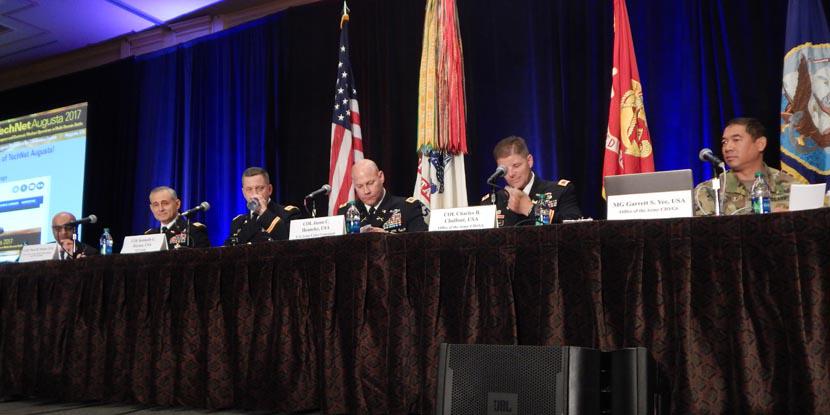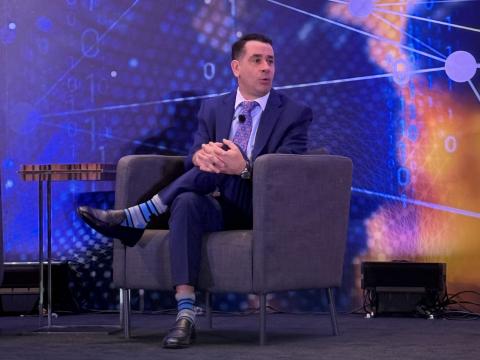Securing the Castle with Network Modernization
U.S. Army officials who play various roles in modernizing the network say doing so offers multiple benefits, including saving money, improving cybersecurity and offering greater flexibility on behalf of warfighters.
The officials made the comments while serving on a network modernization panel on the final day of the AFCEA TechNet Augusta 2017 conference.
Col. Charles Chalfont, USA, chief, Enterprise Integration Division, in the Office of the Army CIO/G-6, compared the network to a castle. Castle security improves with the migration to the Joint Regional Security Stacks (JRSS)—a major piece of network modernization within the Army and across the Defense Department.
He described the pre-JRSS network as a castle with many doors, with each door managed by a different entity with no standards for how those doors are operated or secured. Picture the Army network as a big castle with a wall around it. With JRSS, the military is eliminating some doors and placing the remaining doors under one control authority.
Col. Chalfont: With JRSS, reducing castle doors, tightening control and security#AFCEATechNet
— George Seffers (@gseffers) August 10, 2017
“We’re reducing the attack surface. We’re eliminating different ways into the network. This ends up with an increased level of security and more efficient operation as well,” Col. Chalfont said. “The bits and bytes will flow faster and more smoothly as we take out some of these redundant security solutions that are in place.”
Prior to JRSS, the Army had hundreds of server stacks both on the classified and unclassified side. The modernization effort will ultimately reduce that to 23 secure stacks and 25 unsecured.
Col. Jason Henneke, USA, director, Future Operations, U.S. Army Cyber Command, reported the modernization effort will be more than 50 percent complete by the end of the current fiscal year. The goal is to upgrade 86 sites by the end of fiscal 2019. Thirty-eight sites have been completed so far.
Col. Jason Henneke, USA, @ARCYBER, Hats off to the workforce because network modernization is not easy.#AFCEATechNet
— George Seffers (@gseffers) August 10, 2017
Col. Kenneth Haynes, USA, director, Army Global Modernization Team, U.S. Army Network Enterprise Technology Command (NETCOM), pointed out the modernization also includes multiprotocol label switching (MPLS) mesh networking.
“That gives ... us the ability to flex the network in unprecedented ways. For example, using MPLS, we recently extended our [continental U.S]. network to the European theater to support our forward deployed forces,” Col. Haynes reported. “As we continue network modernization, this forwarding of our networks will only make it better for our warfighters.”
Col. Kenneth Haynes, director of Global Mod Team, NETCOM: JRSS levels the playing field for everyone.#AFCEATechNet
— George Seffers (@gseffers) August 10, 2017
He added that network modernization also will bring cost savings that will allow the Army to “grow the network as requirements are identified.”





Comments